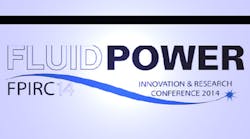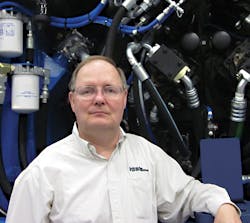I had been anticipating attending the Fluid Power Innovation & Research Conference for months. So when mid-October finally arrived, it was off to Nashville. The conference was filled with technical presentations delivered primarily by students at schools that are part of the Center for Compact & Efficient Fluid Power. (CCEFP).
Of course, the event didn’t involve just taking in presentations. There was plenty of time for networking, facility tours, and even some fun. The closing presentation was given by Eric Lanke, CEO of the National Fluid Power Association (NFPA), and Kim Stelson, Director of the CCEFP, who outlined how the CCEFP would continue onward once its primary funding from a National Science Foundation (NSF) grant expires next year.
More than 50 companies support the CCEFP through funding and donations. Personally, I think the CCEFP is the best thing to happen to the North American fluid-power industry in 50 years. For about two decades after World War II, the US led the world in cooperative fluid-power research. Then within just a few years, research centers all but vanished throughout the US, whereas Europe had about 30.
This file type includes high resolution graphics and schematics when applicable.
So, with the NSF grant funds soon to dry up, a plan had to be developed to replace that lost revenue. The solution described by Eric and Kim is the Pascal Society, created by NFPA’s Education and Technology Foundation. The Pascal Society will combine the financial and volunteer contributions of a wide industry network into one concentrated effort to develop fundamental knowledge about fluid power, as well as educate the next generation of scientific and engineering leaders in the field.
Two things about the presentation impressed me most. First, the entire program was well planned and detailed. I’m one of the last people you’d want to ask about finances. Yet, I understood what was explained, and it all made sense. Second, in this age where companies and organizations are understaffed and overworked, Eric, Kim, and their team were able to launch the Pascal Society well before the NSF cutoff date.
If you have a moment, visit the CCEFP and the Pascal Society online to learn more about them. A lot of companies spend a lot of money on research, but the CCEFP provides a means to combine efforts and resources to help ensure a strong future for fluid-power technology.



